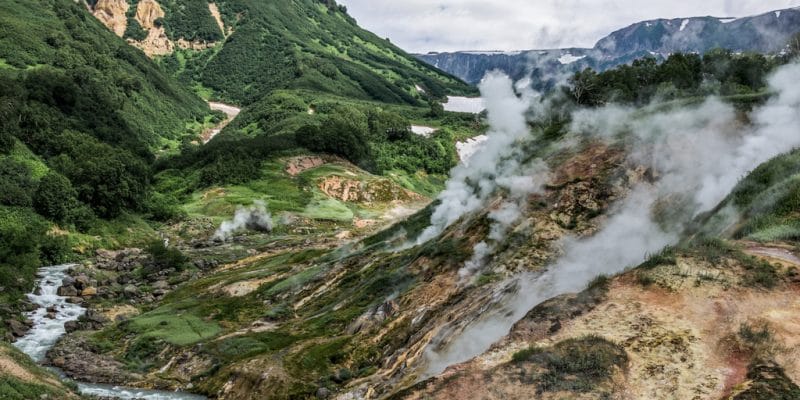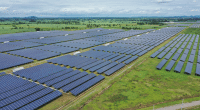Kalahari's GeoEnergy company is evaluating the feasibility of a geothermal site around the Bweengwa River west of Lusaka, the capital of Zambia. The company, which is continuing to drill, may soon be able to install a geothermal power plant there.
It is news that should please the Zambian authorities, who are engaged in a policy aimed at diversifying the country’s electricity mix, which is largely dominated by hydroelectricity. The Kalahari GeoEnergy company is publishing some results of its exploration work around the Bweengwa River, located west of Lusaka, the capital of Zambia.
Over the past few months, Kalahari GeoEnergy has drilled a number of holes that have led to the discovery of two reservoirs. Covering an area of 1 km², the larger one is a “shallow” aquifer (over 200 m) that is connected to a deeper zone in the Lower Karoo, a sequence of sedimentary rocks (sandstone) found in Botswana, Zambia, Zimbabwe and Mozambique. “We believe that the entire system is most likely fed by a single source in the Kafue pit,” says Kalahari GeoEnergy. The company believes that the site is indeed suitable for a geothermal power plant.
A 15 MWe geothermal power plant
“Zambia has both the geological framework for geothermal energy and a rich history of efforts to harness this energy. The country has more than 80 thermal springs located in fault systems in the rocks of the Proterozoic basement and largely associated with the Karoo (Permian) era basins and also with the more recent East African rift structures,” says Kalahari GeoEnergy.
The company’s immediate focus is on the geothermal site around the Bweengwa River where it plans to install a 15 MWe geothermal power plant. Kalahari GeoEnergy will start with a pilot project that will lead to the construction of a small steam power plant capable of producing 250 kWe. This facility will be built within the next 10 months. The small power plant will enable capacity building within Kalahari GeoEnergy and all stakeholders in the project.
To build the large 15 MWe plant, the company claims to have the necessary permits, funds and contractors. It is ready to drill three more narrow resource delineation wells as part of a programme designed to test both shallow and deeper zones.
“If successful, these tests will be followed by a technical and economic feasibility study funded by the U.S. Trade and Development Agency (USTDA) for potential on-site power generation from shallow and deep reservoir resources. The programme has been designed and will be overseen by the company’s consultants and the Geologica geothermal group,” explains Kalahari GeoEnergy.
Jean Marie Takouleu







